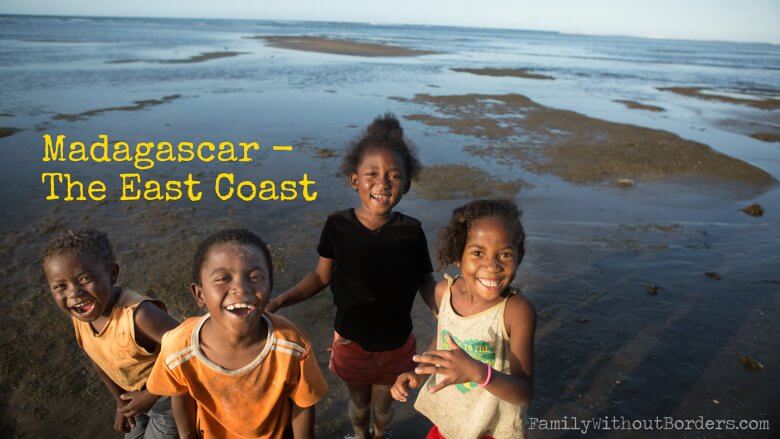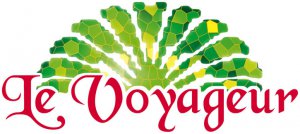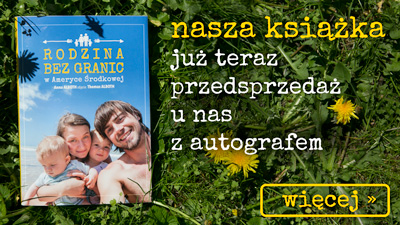
Greener and even more challenging roads – that’s the difference between west Madagascar and east. I think in this post I will let Tom’s pictures talk…
Going more east out of Tana (Antananarivo) – means: getting lower (Tana is situated in the middle of the island, on almost 1300 metres above the sea level), with every single kilometre. With every kilometre there is also less and less houses made of stone and more made of wood, bricks or mix of everything. Madagascar is called Red Island because of it’s iron-rich soil. Many houses here are made of bamboo or thin wood frame with adobe walls and thatched roofs. Picturesque!
Picturesque are also the stands full of fruits (for example in the market of Moramanga): all kind of shades of yellow, greenish and orange. I even didn’t try to remember all the names but buying them in discovering the structure, the colour inside and the taste is a game on it’s own.
The game is the same with all the little kiosk and since I have a feeling that the whole Madagascar is a big shop window (on almost every window of every house or a hut, there is something standing and you can buy it), you can play the game forever. What is in this plastic bottle? And what is in those? Those are nuts to eat or to wash something? This is a scarf, skirt or a towel? – It’s a lamba! If you don’t have lamba, you are not a Malagasy women – told me one Malagasy women. Lamba is a traditional garment for both: women and men, highly emblematic in Malagasy culture, of the rectangular size, wrapped around the body in basically any way you wish!
And what are those funny little donuts, everywhere? After few days we knew the name: “mofo gasy”. They are made of rice and fat, can be sweet or salty and became our street snack for next long weeks. Every third women makes them for sell in her kitchen.
Next big thing is betsa-betsa, fermented sugar-cane juice, illegal alcohol, which you can buy if you are friendly and lucky. Same goes with home-made rum.
While walking through villages, do make some shopping or look for betsa-betsa, we also took part in some fun live: our girls learned to play “tsupatu” (a game with 5 stones, which you can through up and catch in a right order) and we had a chance to play a village “bingo”. The women were very excited to help us crossing out (putting the little stone on) the numbers on the cards, we have bought. We were hoping for a big winery and buying (from the money we should win) betsa-betsa for everyone but bingo is all about good luck, not any skills;)
The east of Madagascar is not the region place to travel through. Except the one main road, to get to any other place you need: 4WD car, a motor boat or a pirogue (dugout canoe). All of this is not a regular transport and the prices for it can get really high. And, of course, it also needs some logistics, language skills and bargaining over the price.
For example, to get to the the Pangalanes Lakes, the only way is to go from Mahambo (or Tamatave) by a motor boat. For 3 hours. This is something what can (and do) effort only the tourists.
All the way to get there you have to go along the part of the Canal des Pangalanes. The Canal is a crazy thing: built between 1896 and 1904 during the time of the French, as a better way than rough Indian Ocean on the eastern side of the country. It goes along the seaside, just some few hundred metres away from the ocean, goes from Foulpointe to Farafangana and is almost 700km long!
Big part of it are the Pangalanes Lakes, where we spend few days (exactly on the Lac Ampitabe). Building the castles from sand, watching the lemurs and talking to the people. For example with this 19-year-old-boy Leonce, who spends part of his year working as a guide in the national park. He studied English just for this but actually knows all the sentences by heart, even with the latin names, but doesn’t really know what is he talking about. He earns the biggest salary in his family (who live in a big city Tamatave). Which is almost 40 euros a month.
But our favourite part of the Magagascar East coast was for sure the beach in Ambila Lemaitso. Being between the strong ocean on one side and the canal on the other (first you have to cross it, they put the car on three boats and that’s the ferry!), having the wind from both sides, having a sunset on one side and the sunrise on the other… ah!
While having our little camp, with the tent and the camp fire, we always attract the people. And kids especially, of course. Lina, Estera and their brothers not only showed us what burns the best (yeah, I though I know, and then they looked at me with this little smiles, run to the forest, and brought what can really make us fire), tought Hanna and Mila climbing all the possible trees but also gave us some lessons. While singing Polish song (“Wszystkie dzieci nasze są”) and feeding them with my one spoon our noddles with souce (if we let them eat, they would simply finish everything, not thinking that for next days I won’t have any food for my own kids), we talked about the animals of Madagascar. What is so symbolic? Lemurs, right? In Malagasy: sifaka. In the forests, maybe 50 km away from this beach. Can you believe that those Malagasy kids had no idea what sifaka is? That they have never seen any?!
The End of the Road
After 520 road kilometres north of Tanna (the capital) the paved road ends in Soanierana – Ivongo. From this point you have only two options, to go further: one is to take a boat and get to Sainte Marie island (in Mahambo or Soanierana – Ivongo) and the second is to go north, by a famous of being the worst in the country: road RN5. It starts in Soanierana-Ivongo (where the boat to SM goes) and takes you north. But then you are for 20 or 30 or 40 hours in the 4WD car, where the mud gets up to the top of your window and you sit and push and push and wait when there will be more people to push. We were quite attracted by this idea but after having our small (2 hours) experiences on roads like this, we thought that holding tight our kids non stop for a day or two and taking care that they don’t get blue bruises all over their bodies is… just not much fun.
So we went… to the island. To the island, where in this exactly part of the year, there are… whales. We gonna tell you all about this meeting very soon.
 Some of the places we could visit thanks to the Madagascar tour operator and travel agency Le Voyageur. Thank you!
Some of the places we could visit thanks to the Madagascar tour operator and travel agency Le Voyageur. Thank you!

Our first book is out!
We have published our first book (for now just in Polish:) about our Central America Trip.
See, read and order here »














































One Comment
Wow! That’s really amazing!